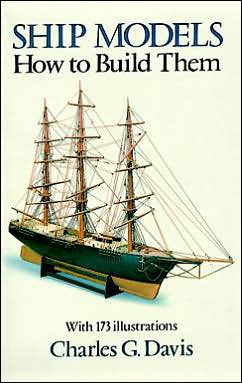Handbook of Model Rocketry
A fully updated new edition of the bible of model rocketry and the official handbook of the National Association of Rocketry G. Harry Stine was one of the founders of model rocketry and one of its most accomplished and respected figures. His Handbook of Model Rocketry has long been recognized as the most authoritative and reliable resource in the field. Now fully updated and expanded by Harry's son Bill Stine, who inherited his father's passion for model rockets, the new Seventh Edition...
Search in google:
Harry Stine, the founder of the National Association of Rocketry, and Bill Stine, founder and president of an aerospace corporation, give instructions for building, launching, tracking, and recovering model rockets. This seventh edition features material on new types of rockets, motors, and electronic payloads, as well as relevant computer software and Internet resources, and on the latest regulations. A new chapter covers high-power rocketry. B&w photos of rockets, launches, and equipment are included. Annotation © 2004 Book News, Inc., Portland, OR Sally J. K. Davies - Children's Literature This new edition of the "bible of model rocketry" is packed with years of research and tested science, filled with explanations about what works, what doesn't, and why. This thick volume has chapters about getting started, the tools and techniques in the workshop, rocket construction, the motors, the ignition systems, launching techniques, the height, the stability, the aerodynamics, the multistage rockets, recovery devices, glide recovery, building and flying large models, payloads, scale models, altitude determination, model rocket ranges, the clubs, and the contests. The book includes the latest regulations, a new chapter featuring high powered rocketry, a lengthy index, an extensive bibliography, a list of important addresses and web sites, calculations, computer code, black and white photographs throughout and many labeled diagrams. 2004, John Wiley & Sons, Ages 12 up.
Preface to the seventh editionPreface to the first edition1This is model rocketry12Getting started133Tools and techniques in the workshop254Model rocket construction455Model rocket motors646Ignition and ignition systems827Launchers and launching techniques988How high will it go?1119Stability12810Model rocket aerodynamics14311Multistage model rockets15912Recovery devices17413Glide recovery19014Building and flying large models22115Payloads23216Scale models24717Altitude determination26618Model rocket ranges28319Clubs and contests29820Where do I go from here?308Epilogue317Bibliography319App. I: Important addresses321App. IIModel rocket CP calculation323App. IIIRocket altitude simulation : computer program RASP-93325App. IVStatic stability calculation : computer program STABCAL-2331App. VThe triple-track tracker337App. VITwo-station alt-azimuth tracking data reduction program MRDR-2343App. VIIThree-station elevation-angle-only tracking data reduction tables345App. VIIISample NAR section bylaws349Index353
\ Children's LiteratureThis new edition of the "bible of model rocketry" is packed with years of research and tested science, filled with explanations about what works, what doesn't, and why. This thick volume has chapters about getting started, the tools and techniques in the workshop, rocket construction, the motors, the ignition systems, launching techniques, the height, the stability, the aerodynamics, the multistage rockets, recovery devices, glide recovery, building and flying large models, payloads, scale models, altitude determination, model rocket ranges, the clubs, and the contests. The book includes the latest regulations, a new chapter featuring high powered rocketry, a lengthy index, an extensive bibliography, a list of important addresses and web sites, calculations, computer code, black and white photographs throughout and many labeled diagrams. 2004, John Wiley & Sons, Ages 12 up. \ —Sally J. K. Davies\ \







